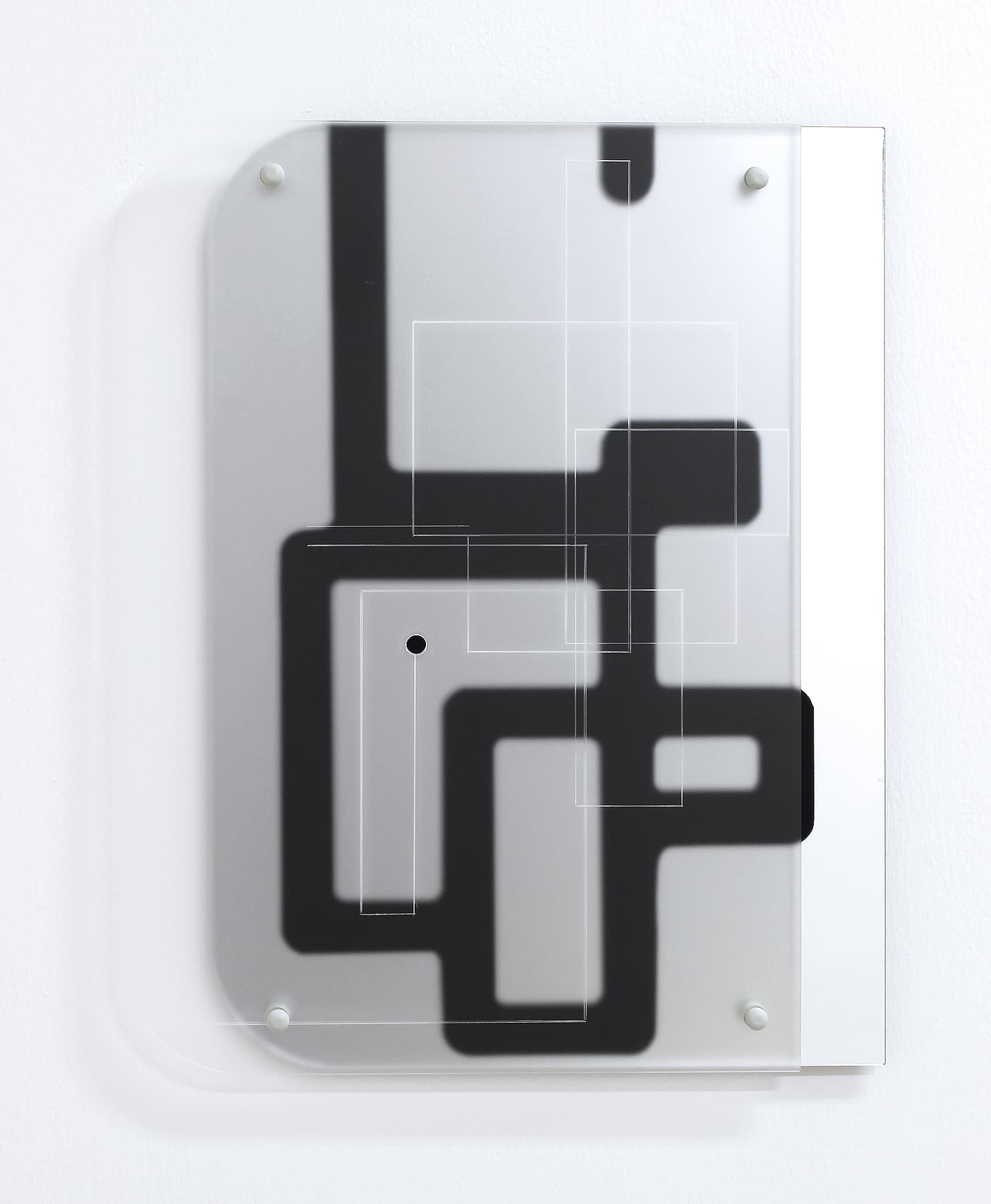2021 Joint Mathematics Meetings
Yvette Kaiser Smith
Artists
Yvette Kaiser Smith
Artist
Chicago, IL
Statement
I create wall-based geometric abstractions by utilizing grids and simple geometric shapes as tools in inventing systems for visualizing numerical values of sequences derived from the numbers π and e. I spent over 20 years creating large works, fueled by identity narratives, by crocheting fiberglass that was formed by adding polyester resin, a labor-intensive process that engaged my hands at every stage. Number sequences entered my work as part of an expanding identity dialogue. The laser cut work, which began in 2016, has almost completely removed the sense of my hand from the final product. I am now exploring different ways to directly engage the material with my hand and bring identity dialogues back into the work.
Artworks

Elevation: in 44 digits from e
53 x 43 x 3 cm
Silver mirrored acrylic sheet with stenciled spray paint and matte clear acrylic sheet with incised line, nylon spacers, capped hardware.
2019

Codex: pi 1021
235 x 342 x 4 cm
Clear with green edge, fluorescent green, and 31% light transmission white laser-cut acrylic sheets, nylon spacers, capped hardware.
2016